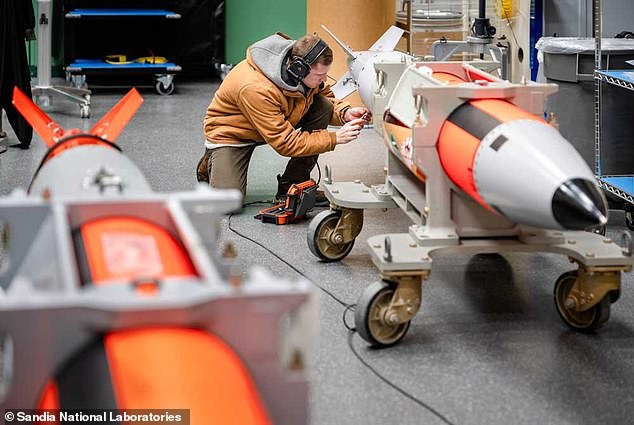
US Accelerates Nuclear Weapon Development 24 Times Hiroshima Yield Amid WWIII Concerns
U.S. Accelerates Development of Powerful New Nuclear Bomb Amid Rising Tensions
America’s new B61-13 nuclear “gravity bomb” is entering production seven months ahead of schedule amid escalating fears of conflict with China and Russia. Scientists at Sandia National Laboratories in New Mexico are fast-tracking the weapon, initially slated for 2026, to bolster the U.S. deterrent strategy.
A Terrifying Upgrade
The B61-13 is 24 times more powerful than the atomic bomb dropped on Hiroshima in 1945. While “Little Boy” released 15 kilotons of explosive force, the B61-13’s yield is 360 kilotons—equivalent to 360,000 tons of TNT. Designed to replace aging Cold War-era bombs, it combines the warhead of the 1980s B61-7 with modern safety features and precision guidance from the newer B61-12.

Workers prepare the B61-13, which pairs a legacy warhead with advanced guidance systems.
Geopolitical Pressures
The accelerated timeline reflects growing U.S. concerns over confrontations with China and Russia. China recently warned it is prepared for a “tariff war or any other type of war,” while Russia’s invasion of Ukraine has heightened nuclear anxieties. The Department of Defense (DoD) emphasized the B61-13 will target “harder and large-area military targets,” though officials stress it won’t expand America’s nuclear stockpile (currently 5,044 warheads).
Delivery and Destruction
The bomb will deploy from stealth bombers like the B-2 and the upcoming B-21 Raider. If detonated over a city like Beijing, it could kill 788,000 people instantly, injure 2.2 million, and vaporize everything within a half-mile radius. Radiation would prove lethal within a mile, with long-term cancer risks extending further.

The B-21 Raider, under development, will deliver the B61-13.
Global Arms Race
As the U.S. modernizes its arsenal, rivals like China, Russia, North Korea, India, and Pakistan have added over 700 warheads to their stockpiles in recent decades. Meanwhile, stalled nuclear test-ban treaties and new underground testing by the U.S. signal a precarious shift toward renewed arms competition.
A Grim Reminder
The B61-13’s destructive power echoes the horrors of Hiroshima, where “Little Boy” killed 140,000. Today’s geopolitical landscape, however, raises the stakes even higher.

The 1945 Hiroshima bomb vs. the B61-13’s vastly greater power.
With production accelerating, the B61-13 underscores a volatile era where deterrence and destruction walk a razor’s edge.


